
목차
전기 상자 설치는 전기 배선 프로젝트에서 중요한 단계입니다. 이러한 상자는 전기 연결을 위한 인클로저 역할을 하여 안전, 구성 및 유지 관리를 위한 쉬운 접근성을 보장합니다. 이 포괄적인 설치 가이드는 PVC 및 금속 변형을 포함한 다양한 유형의 전기 상자를 다루며 설치에 대한 단계별 지침과 모범 사례를 제공합니다. 이러한 지침을 따르면 안전하고 효율적인 전기 설치를 보장할 수 있습니다.
전기 상자, 접합 상자 또는 인클로저라고도 알려진 전기 시스템의 필수 구성 요소입니다. 이들은 전기 연결의 보호 케이싱 역할을 하여 우발적인 접촉을 방지하고 화재 위험을 최소화하며 유지 관리 및 문제 해결을 용이하게 합니다. 전기 상자는 스위치, 콘센트, 회로 차단기 또는 전선 스플라이스 등 다양한 전기 장치를 수용하도록 설계되었습니다.
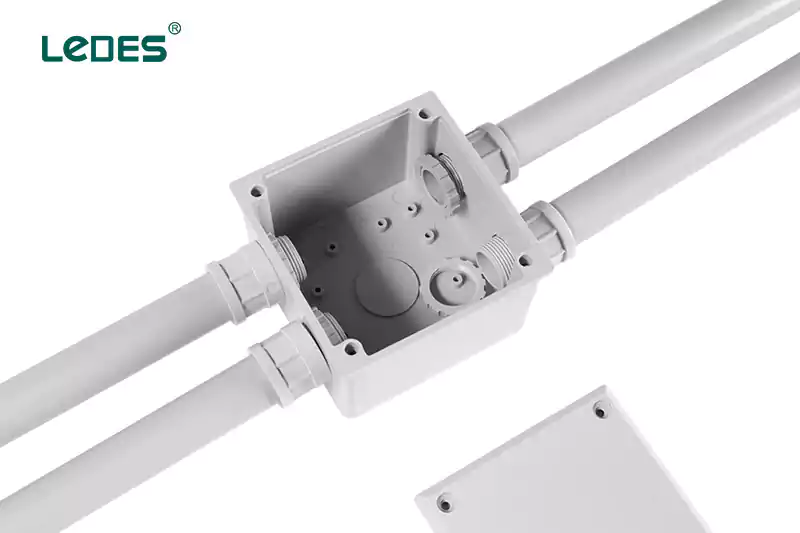
전기 상자는 비전도성 또는 전도성 재료로 만들어진 용기로, 전기 연결을 안전하게 둘러싸도록 설계되었습니다. 주된 목적은 전기 배선 연결과 구성 요소를 물리적 손상, 환경적 위험 및 무단 액세스로부터 보호하는 것입니다. 전기 상자는 전기 장치를 장착하기 위한 안정적인 플랫폼을 제공하고 전기 코드 및 안전 규정을 준수합니다.
전기 상자를 올바르게 설치하는 것은 다음과 같은 여러 가지 이유로 매우 중요합니다.
전기 상자를 적절히 설치하면 노출되거나 부적절하게 연결된 전선으로 인해 발생하는 감전, 단락 및 화재 위험을 최소화할 수 있습니다. 전기 구성 요소와 주변 환경 사이에 안전한 장벽을 제공합니다.
전기 상자는 지정된 공간 내에 전선과 구성 요소를 보관하여 정리를 촉진합니다. 이를 통해 문제 해결, 수리 및 수정을 보다 쉽게 관리할 수 있으며 전기 시스템의 우발적 손상 가능성을 최소화합니다.
전기 코드와 규정은 전기 상자 설치에 대한 특정 요구 사항을 규정합니다. 이러한 코드를 준수하면 전기 시스템이 안전 표준을 충족하고 지역, 지역 및 국가 규정을 준수하는 것이 보장됩니다.
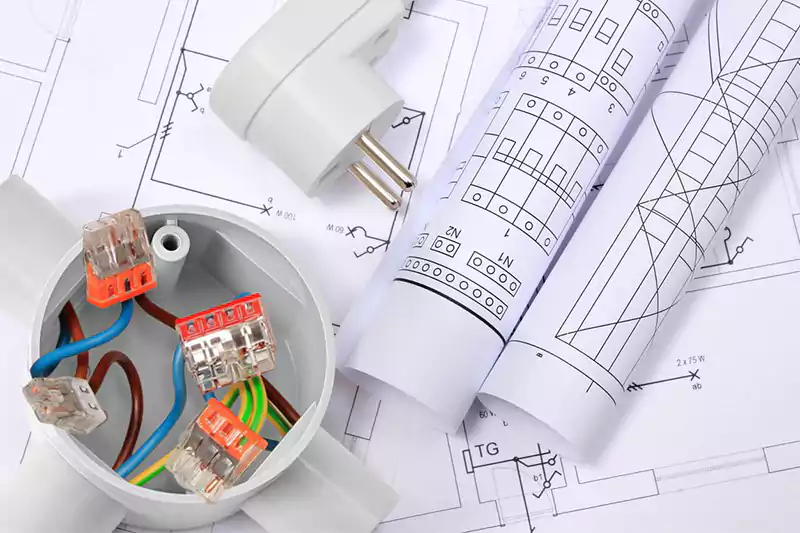
전기 상자를 설치할 때는 관련 전기 규정과 안전 고려 사항을 준수하는 것이 필수적입니다. 여기에는 다음이 포함될 수 있습니다.
전기 규정은 내부에 수용될 전선과 장치의 수와 크기에 따라 전기 상자에 대한 최소 크기 및 용량 요구 사항을 지정합니다. 이러한 요구 사항을 따르면 과밀화를 방지하고, 열 축적을 줄이며, 적절한 전선 연결을 위한 충분한 공간을 확보할 수 있습니다.
전기 상자는 전기 전류의 안전한 경로를 확립하고 전기적 결함으로부터 보호하기 위해 적절히 접지되어야 합니다. 접지 요구 사항은 전기 상자의 유형과 특정 응용 분야에 따라 다릅니다.
전기 코드는 전기 상자의 적절한 위치와 접근성을 지시할 수 있습니다. 예를 들어, 가연성 물질로부터 일정한 간격을 요구하거나 상자와 다른 구성 요소 사이의 최소 거리를 지정할 수 있습니다.
전기 상자는 금속, PVC 또는 유리 섬유와 같은 다양한 재료로 제공됩니다. 각 재료는 다른 특성을 가지고 있으며 특정 응용 분야에 적합할 수 있습니다. 코드는 다양한 환경 및 전기 조건에 대해 승인된 재료를 지정할 수 있습니다.
적절한 박스 커버를 설치하는 것은 전기 연결부를 우발적인 접촉으로부터 보호하고, 먼지나 이물질이 쌓이는 것을 방지하며, 안전 기준을 준수하는 데 필수적입니다. 필요한 커버 유형은 박스 유형과 특정 용도에 따라 다를 수 있습니다.
전기 시스템을 설치할 때는 일반적으로 다양한 유형의 전기 상자를 사용하지만, 그 용도와 설치 요구 사항은 다릅니다. 이를 사용할 때는 올바른 유형의 전기 상자를 선택하고 올바른 설치 방법을 따라야 합니다. 다음은 일반적인 전기 상자 유형입니다.
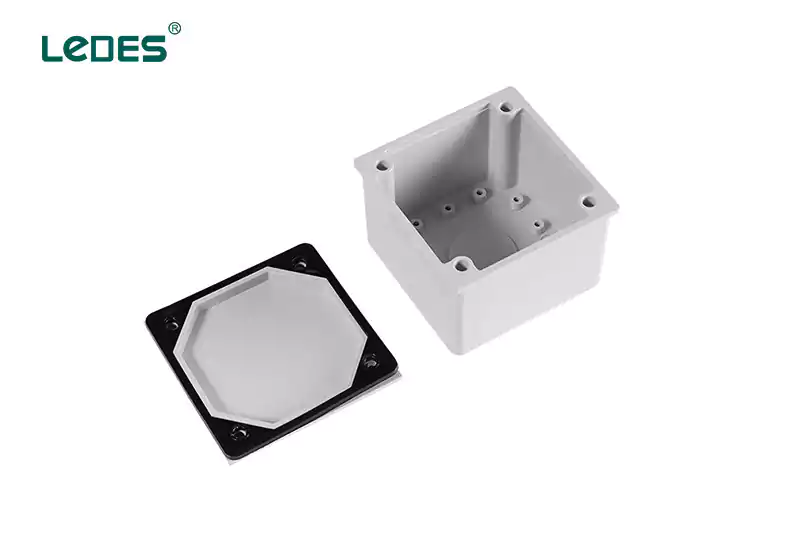
적응형 박스는 유틸리티 박스 또는 핸디 박스라고도 하며 다양한 용도로 사용되는 다재다능한 전기 박스입니다. 일반적으로 크기가 작고 다양한 배선 구성을 수용하기 위해 여러 개의 노크아웃 또는 개구부가 있습니다. 적응형 박스는 일반적으로 조명기구, 스위치, 콘센트 및 저전압 배선 설치에 사용됩니다.
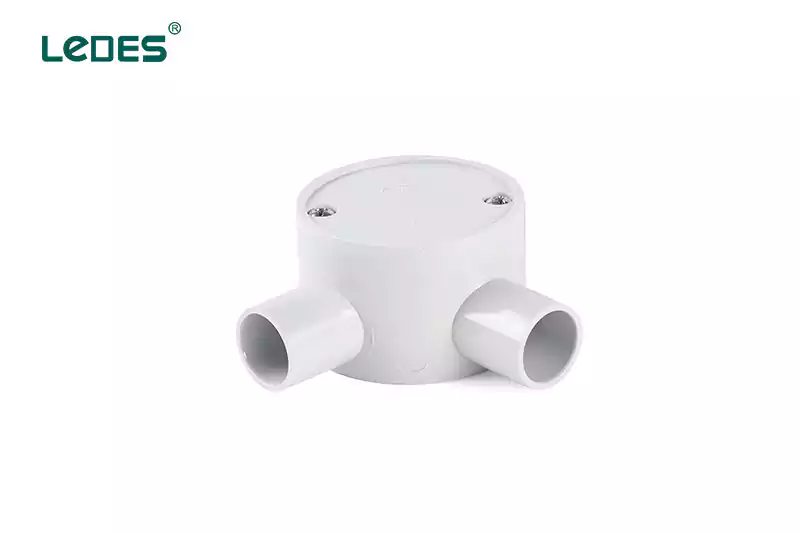
정션 박스는 전기 연결의 중심 허브 역할을 합니다. 주된 목적은 와이어 스플라이스 또는 연결에 대한 안전한 인클로저를 제공하여 보호되고 정리되도록 하는 것입니다. 정션 박스는 다양한 크기와 구성으로 제공되며 일반적으로 주거, 상업 및 산업 분야에서 사용됩니다.
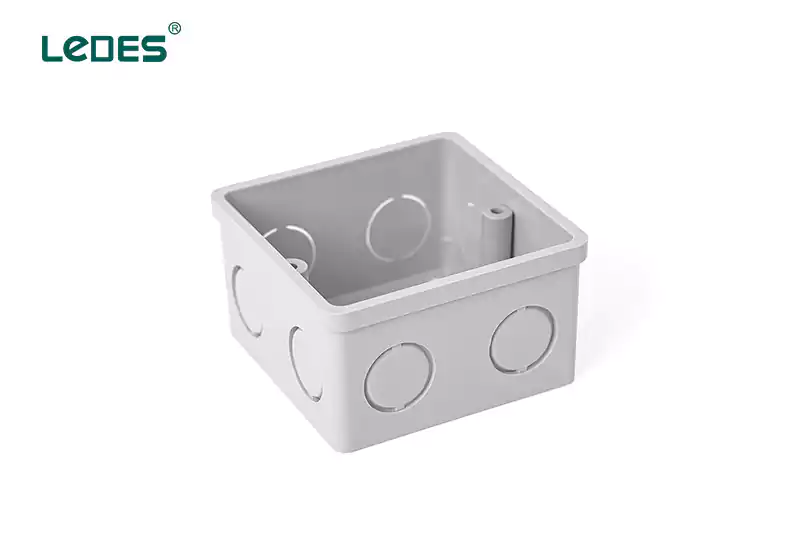
스위치 박스는 스위치를 수용하도록 특별히 설계되었습니다. 스위치와 관련된 전기 연결부(예: 배선 및 단자)에 대한 안전한 인클로저를 제공합니다. 스위치 박스는 다양한 크기와 구성으로 제공되어 단극, 복극 또는 3방향 스위치를 포함한 다양한 유형의 스위치를 수용합니다.
콘센트 상자, 즉 리셉터클 상자는 전기 콘센트나 리셉터클을 수용하도록 설계되었습니다. 이 상자는 콘센트와 관련된 배선 연결을 위한 안전하고 보호된 인클로저를 제공합니다. 콘센트 상자는 표준 콘센트, GFCI 콘센트 또는 USB 콘센트와 같은 다양한 유형의 콘센트를 수용할 수 있도록 다양한 크기와 구성으로 제공됩니다.
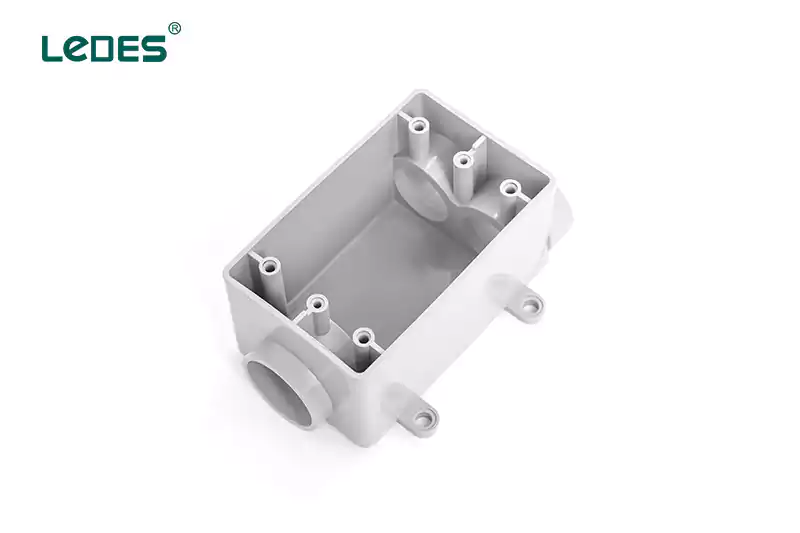
갱 박스는 멀티 갱 박스라고도 하며, 단일 장치에 여러 스위치나 콘센트를 수용할 수 있는 대형 전기 상자입니다. 갱 박스는 주방이나 거실과 같이 여러 스위치나 콘센트를 함께 설치해야 하는 곳에서 일반적으로 사용됩니다. 여러 장치를 한 곳에 배선하기 위한 편리하고 체계적인 솔루션을 제공합니다.
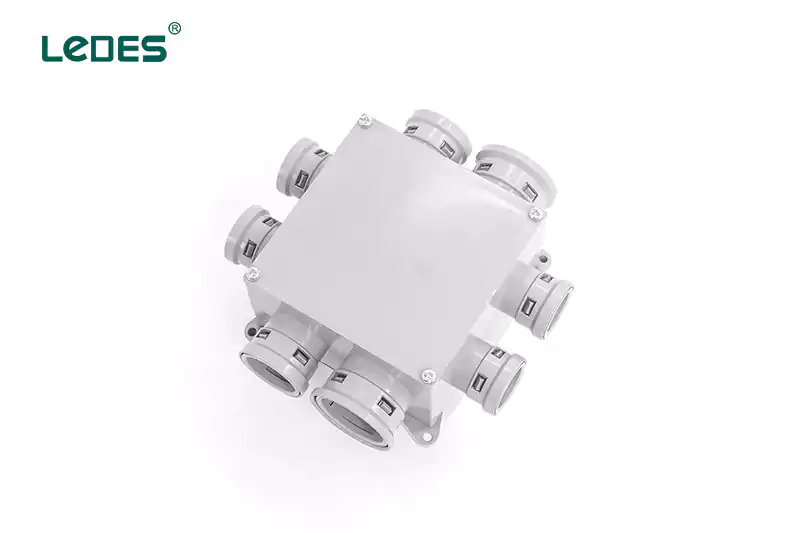
천장 박스는 천장 설치 시 전기 연결을 위해 특별히 설계되었습니다. 일반적으로 조명기구, 천장 선풍기 또는 기타 오버헤드 전기 장치를 장착하는 데 사용됩니다. 천장 박스는 기구의 무게를 지탱하고 배선 연결을 위한 안전한 인클로저를 제공하도록 설계되었습니다.
플로어 박스는 바닥에 설치하도록 설계된 전기 상자입니다. 바닥 접근이 필요한 구역에서 전원 콘센트, 데이터 포트 또는 기타 전기 연결에 편리하고 안전한 솔루션을 제공합니다. 플로어 박스는 일반적으로 사무실, 회의실 또는 공공 장소와 같은 상업적 환경에서 사용됩니다.
상자 유형에 따라 설치 단계와 요구 사항이 다를 수 있으므로 전문 전기 기술자에게 도움을 요청하는 것이 좋습니다. 참조할 수 있는 일반적인 설치 지침은 다음과 같습니다.
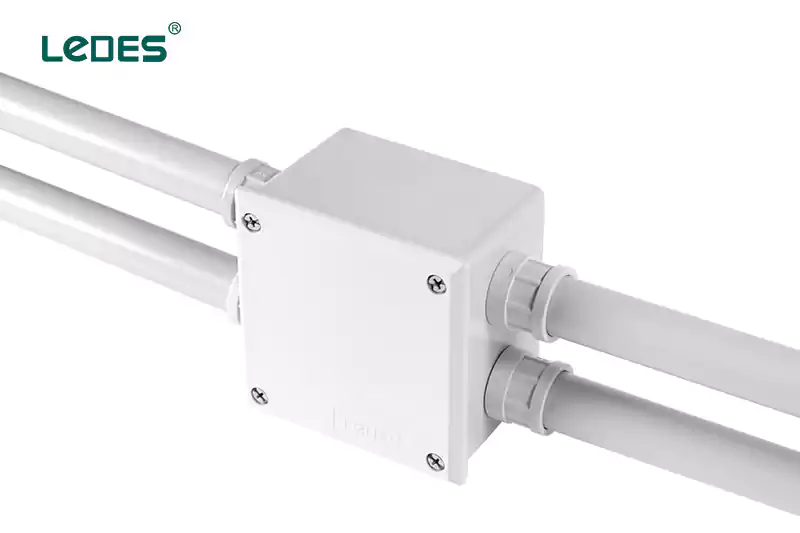
상업용 건물: 적응형 박스는 일반적으로 사무실, 소매점, 병원 등의 상업용 건물에서 조명 시스템, 전원 콘센트, 데이터 케이블의 전기 연결을 관리하는 데 사용됩니다.
산업 현장: 공장, 제조 시설 등의 산업 환경에서 기계, 제어판, 모터 제어 장치의 전기적 연결을 구성하는 데 사용됩니다.
주거용 설치: 적응형 박스를 주택에 설치하여 방, 주방 또는 야외 공간의 전기 연결을 관리할 수 있으며, 향후 개조나 증축 시 유연한 솔루션을 제공합니다.
- 위치를 선택하세요: 접근성, 케이블 배선 요구 사항, 전기 코드 및 규정 준수 등을 고려하여 조절형 박스에 적합한 위치를 선택하세요.
- 장착 표면 준비: 벽이나 천장과 같은 장착 표면이 튼튼하고 상자를 적절히 지지할 수 있는지 확인하십시오. 구멍을 뚫거나 장착 브래킷을 설치하는 등 필요한 준비를 하십시오.
- 케이블 진입 글랜드 설치: 상자 설계에 따라 적절한 위치에 케이블 진입구나 도관을 설치하여 케이블을 상자 안으로 넣습니다.
- 상자 장착: 적합한 나사나 장착 브래킷을 사용하여 적응형 상자를 장착 표면에 부착합니다. 제자리에 단단히 고정되었는지 확인합니다.
- 케이블 연결: 케이블 진입 지점이나 도관을 통해 케이블을 연결하고 배선도나 프로젝트 요구 사항에 따라 상자 내부에 필요한 전기 연결을 합니다.
- 케이블 보안 및 정리: 상자 안의 케이블을 고정하고 정리하려면 내부 케이블 클램프나 케이블 타이를 사용하세요. 그러면 압박이나 손상을 방지할 수 있습니다.
- 상자 닫기: 상자 덮개를 인클로저 위에 놓고 제공된 패스너나 잠금 장치를 사용하여 고정합니다. 덮개가 제대로 닫히고 밀봉되었는지 확인합니다.
- 테스트 및 확인: 설치가 완료되면 테스트와 검증 절차를 수행하여 적절한 전기적 연결과 기능을 보장합니다.
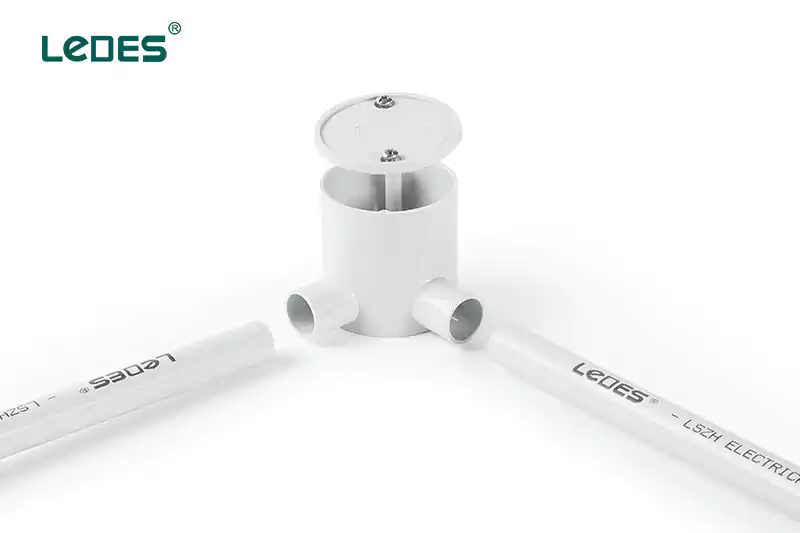
- 상자 선택: 특정 용도에 맞는 접합 상자를 선택하십시오. 크기, 재료(예: 플라스틱 또는 금속) 및 필요한 와이어 연결 수와 같은 요소를 고려하십시오. 상자가 필요한 전기 코드 및 규정을 충족하는지 확인하십시오.
- 위치: 접합 상자의 적절한 위치를 결정합니다. 향후 유지 관리 및 수리를 위해 쉽게 접근할 수 있어야 합니다. 배치, 여유 공간 요구 사항 및 다른 물체 또는 재료와의 근접성과 관련하여 현지 전기 규정을 따릅니다.
- 설치: 접합 상자를 벽이나 천장과 같은 적합한 표면에 단단히 장착합니다. 나사나 앵커와 같은 적절한 하드웨어를 사용하여 안전하고 안정적인 설치를 보장합니다. 상자는 표면과 평평해야 하며 움직이지 않도록 단단히 부착해야 합니다.
- 배선 연결: 전선을 접합 상자로 조심스럽게 배선합니다. 전선의 절연을 벗겨서 연결에 적합한 길이를 노출시킵니다. 적절한 전선 접합 기술(예: 전선 너트 사용)을 따라 전선을 단단히 연결합니다. 모든 연결 부분이 적절하게 절연되고 보호되는지 확인합니다.
- 접지: 전기 규정에 따라 필요한 경우, 접합 상자 내에서 적절한 접지를 보장합니다. 접지선을 상자 내의 지정된 접지 지점(예: 접지 나사 또는 단자)에 연결합니다. 적절한 접지는 전기적 결함을 방지하고 안전을 보장합니다.
- 커버 설치: 모든 배선 연결이 완료되면 커버 플레이트 또는 뚜껑을 접합 상자에 단단히 부착합니다. 커버는 상자와 호환되어야 하며 안전한 밀봉을 제공해야 합니다. 이렇게 하면 전선을 보호하고 우발적인 접촉을 방지할 수 있습니다.
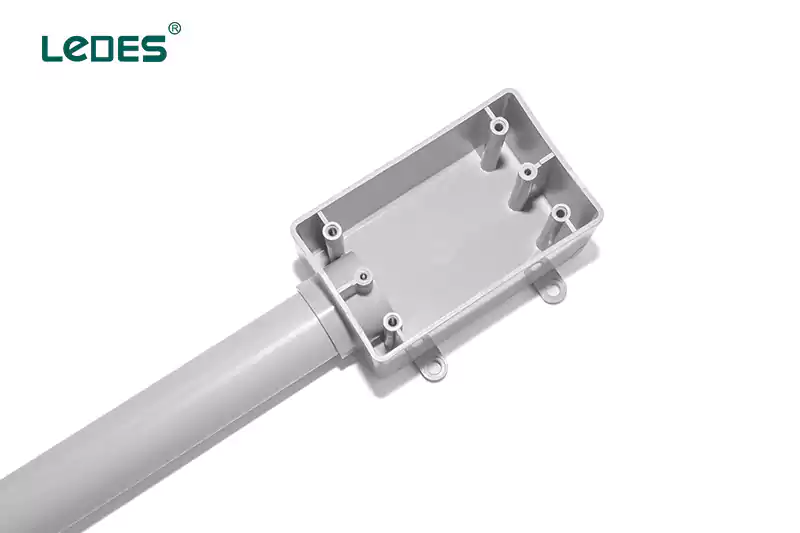
스위치 박스와 콘센트 박스의 설치 프로세스는 몇 가지 유사점이 있지만 중요한 차이점도 있습니다. 두 유형의 결합된 설치 단계는 다음과 같습니다.
- 전원을 끄세요: 전기 작업을 시작하기 전에 상자를 설치할 회로의 전원을 끄십시오. 회로 차단기를 끄거나 해당 퓨즈를 제거하면 됩니다.
- 위치를 선택하세요: 기능성과 접근성을 고려하여 벽이나 천장에 상자의 적합한 위치를 선택합니다. 전기 코드와 규정을 준수합니다.
- 위치 표시: 연필이나 마커를 사용하여 벽이나 천장에 상자의 윤곽을 표시합니다. 수평이고 제대로 정렬되었는지 확인합니다.
- 오프닝을 자르세요: 만능 칼이나 건식벽체 톱을 사용하여 표시된 윤곽선을 따라 조심스럽게 잘라서 상자를 위한 구멍을 만듭니다. 벽이나 천장 뒤의 전선을 절단하지 않도록 주의하세요.
- 상자 장착:
- 스위치 박스: 스위치 박스를 개구부에 삽입하고 단단히 맞는지 확인합니다. 나사나 못을 사용하여 박스를 벽에 부착합니다. 박스가 벽 표면과 평평하게 되어 있는지 확인합니다.
- 콘센트 상자: 콘센트 상자를 개구부에 삽입하고 단단히 맞는지 확인합니다. 나사나 조절식 장착 날개를 사용하여 상자를 벽에 고정합니다. 상자가 벽 표면과 평평하게 되어 있는지 확인합니다.
- 갱 박스: 갱 박스를 개구부에 삽입하고 단단히 맞는지 확인합니다. 벽면 장착형 박스의 경우, 박스를 벽 스터드에 고정하거나 조절 가능한 장착 날개를 사용합니다. 천장 장착형 박스의 경우, 적절한 브래킷이나 지지 시스템을 사용하여 박스를 고정합니다.
- 배선 준비: 필요하다면 전선 끝의 절연을 벗겨서 연결 도체를 노출시킵니다. 전선이 상자에 닿을 만큼 충분히 긴지 확인합니다.
- 전선 연결:
- 스위치 박스: 핫(라인) 와이어와 스위치 와이어를 박스 내부 스위치의 해당 단자에 연결합니다. 일반적으로 검은색 와이어는 황동색 단자에 연결합니다.
- 콘센트 상자: 핫(라인), 중성선, 접지선을 상자 안의 콘센트에 있는 해당 단자에 연결합니다. 일반적으로 검은색 전선은 황동색 단자에, 흰색 전선은 은색 단자에, 녹색 또는 맨 구리선은 녹색 접지 나사에 연결합니다.
- Gang Box: 특정 애플리케이션에 필요한 대로 전선을 연결합니다. 여기에는 와이어 커넥터를 사용하여 전선을 이어 붙이거나 박스 내의 장치나 고정물에 연결하는 작업이 포함될 수 있습니다.
- 장치 또는 고정물 보안:
- 스위치 박스: 스위치를 나사 구멍에 맞추고 나사를 조여 스위치 박스에 부착합니다. 스위치가 단단히 부착되어 움직이지 않는지 확인합니다.
- 콘센트 상자: 콘센트 상자에 리셉터클을 나사 구멍에 맞추고 나사를 조여 부착합니다. 리셉터클이 단단히 부착되어 움직이지 않는지 확인합니다.
- 갱 박스: 제조업체의 지침에 따라 갱 박스 내에 장치나 고정물을 설치합니다. 나사나 기타 제공된 패스너를 사용하여 장치를 제자리에 고정합니다.
- 박스 커버 설치:
- 스위치 박스: 스위치 위에 스위치 플레이트 커버를 설치하려면 나사 구멍에 맞추고 나사를 조입니다. 커버가 똑바로 수평인지 확인합니다.
- 콘센트 상자: 콘센트 플레이트 커버를 나사 구멍에 맞추고 나사를 조여 콘센트 위에 설치합니다. 커버가 똑바로 수평인지 확인합니다.
- Gang Box: 적절한 박스 커버를 설치합니다. 여기에는 사용하지 않는 Gang Box를 위한 빈 커버 플레이트나 스위치나 리셉터클과 같은 장치를 위한 특정 커버가 포함될 수 있습니다.
- 전원을 켜세요: 상자, 장치 및 배선 연결이 안전하게 설치되면 회로 차단기를 켜거나 퓨즈를 교체하여 전원을 다시 켭니다.
- 연결 테스트: 상자 안의 스위치, 콘센트 또는 장치를 테스트하여 제대로 작동하는지 확인하세요.
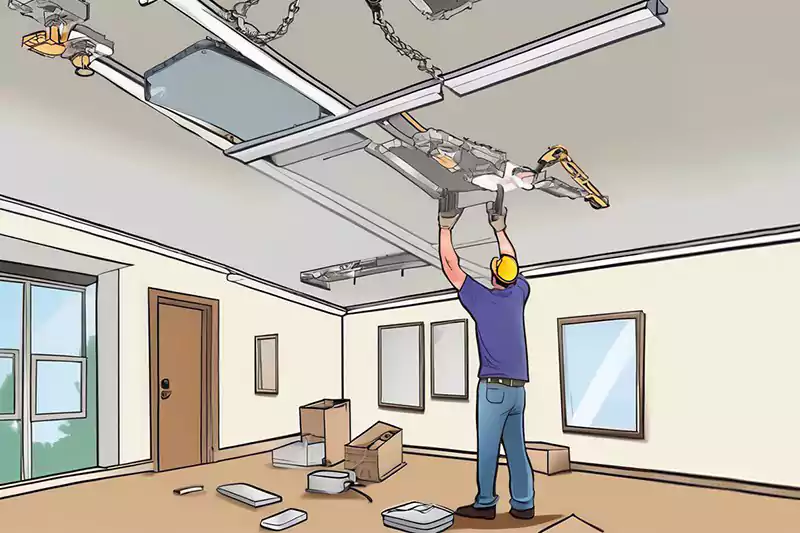
- 전원을 끄세요: 전기 작업을 시작하기 전에 천장 박스가 설치될 회로의 전원을 끄십시오. 회로 차단기를 끄거나 해당 퓨즈를 제거하면 됩니다.
- 위치를 선택하세요: 천장에서 상자를 설치할 위치를 결정합니다. 설치할 고정물이나 장치의 유형을 고려하고 천장 구조에 적절한 지지대가 있는지 확인합니다.
- 위치 표시: 연필이나 마커를 사용하여 천장 표면에 천장 상자의 윤곽을 표시합니다. 중앙에 있고 제대로 정렬되었는지 확인합니다.
- 오프닝을 자르세요: 스터드 파인더를 사용하여 표시된 위치 주변의 천장 장선이나 구조적 지지대를 찾습니다. 필요한 경우, 유틸리티 나이프나 건식벽체 톱을 사용하여 표시된 윤곽선을 따라 조심스럽게 절단하고, 개구부가 천장 상자 크기에 맞을 만큼 충분히 넓은지 확인합니다.
- 상자 장착: 천장 상자를 개구부에 넣고 단단히 맞는지 확인합니다. 금속 상자의 경우 제공된 장착 구멍이나 브래킷을 통해 나사나 못을 사용하여 상자를 천장 장선이나 지지대에 부착합니다. 플라스틱이나 PVC 상자의 경우 조절 가능한 장착 브래킷이나 기타 적절한 방법을 사용하여 상자를 천장 구조물에 고정합니다.
- 배선 준비: 필요한 경우 전선 끝의 절연을 벗겨서 연결 도체를 노출시킵니다. 전선이 천장 상자에 도달할 만큼 충분히 긴지 확인합니다.
- 전선 연결: 천장 상자 내부에서 특정 용도에 맞게 필요에 따라 전선을 연결합니다. 여기에는 전선 커넥터를 사용하여 전선을 이어 붙이거나 설치할 고정물이나 장치에 연결하는 작업이 포함될 수 있습니다.
- 고정물 또는 장치 고정: 천장 조명기구 또는 선풍기를 설치하는 경우 제조업체의 지침에 따라 천장 상자에 기구를 부착하고 고정합니다. 일반적으로 기구의 장착 브래킷을 상자에 제공된 나사 또는 장착 구멍에 맞추고 단단히 조이는 작업이 포함됩니다.
- 박스 커버 설치: 모든 배선 연결과 설비 설치가 완료되면 적절한 박스 커버를 설치합니다. 여기에는 사용하지 않는 천장 박스를 위한 빈 커버 플레이트나 설치된 설비 또는 장치 유형에 맞게 설계된 특정 커버가 포함될 수 있습니다.
- 전원을 켜세요: 천장 박스, 배선 연결, 조명 설치가 완료되면 회로 차단기를 켜거나 퓨즈를 교체하여 전원을 다시 켭니다.
- 연결 테스트: 천장 조명이나 장치를 테스트하여 제대로 작동하는지 확인하세요.
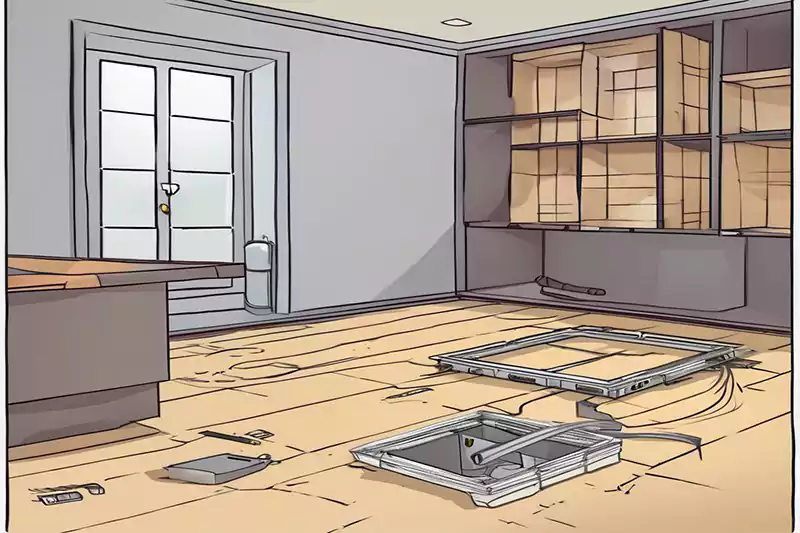
플로어 박스의 설치 과정은 아울렛 박스와 비슷합니다. 하지만 몇 가지 차이점이 있는데, 몇 가지 주요 차이점을 알려드리겠습니다.
- 설치: 콘센트 박스는 일반적으로 벽 표면에 장착되는 반면, 플로어 박스는 바닥에 움푹 들어갑니다. 두 박스의 장착 방법과 사용되는 하드웨어는 다릅니다. 2. 콘센트 박스는 벽 스터드나 다른 구조적 지지대에 고정될 수 있지만, 플로어 박스는 종종 바닥 내에서 제자리에 고정하기 위한 조절 가능한 브래킷이나 메커니즘이 있습니다.
- 정위: 콘센트 박스는 벽에 수직으로 설치되고, 플로어 박스는 바닥 안에 수평으로 설치됩니다. 이러한 방향 차이는 배선 연결과 장치 또는 콘센트의 위치에 영향을 미칩니다.
- 접근성: 콘센트 박스는 일반적으로 벽에 편리한 높이에 장착되므로 설치 및 유지 관리가 더 쉽습니다. 반면, 플로어 박스는 바닥에 구멍을 뚫어야 하며 더 좁은 공간에서 작업해야 할 수 있습니다.
- 박스 커버: 콘센트 박스와 플로어 박스에 사용되는 박스 커버는 다르게 디자인되었습니다. 콘센트 박스 커버에는 주변 벽면과 일치하는 페이스플레이트 또는 커버 플레이트가 포함될 수 있습니다. 플로어 박스 커버는 일반적으로 닫을 때 바닥 표면과 평평하여 안전하고 평평한 보행 표면을 제공합니다.
- 배선 고려 사항: 콘센트 박스와 플로어 박스 모두 적절한 배선 연결이 필요하지만 배선 구성은 다를 수 있습니다. 콘센트 박스는 주로 콘센트와 스위치에 사용되는 반면 플로어 박스는 전원 콘센트, 데이터 포트 또는 AV 연결을 포함한 더 광범위한 장치와 연결을 수용할 수 있습니다.
이러한 유형의 상자를 설치할 때는 제조업체의 지침을 따르고 지역 전기 코드와 규정을 준수해야 합니다. 전기 작업에 대해 확신이 없거나 불편한 경우 면허가 있는 전기 기술자의 도움을 받는 것이 좋습니다.
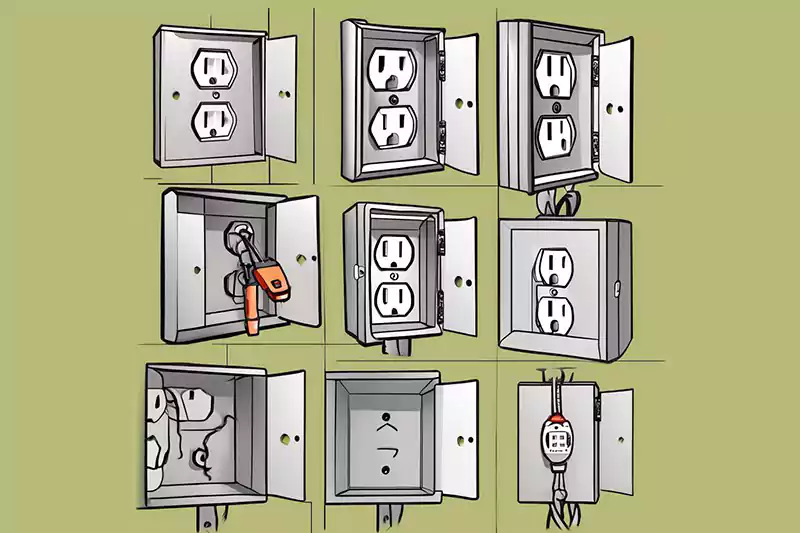
이러한 일반적으로 사용되는 상자의 설치 요인에 관해서는 몇 가지 주요 고려 사항이 있습니다. 염두에 두어야 할 주요 요인은 다음과 같습니다.
상자를 벽이나 천장에 제대로 고정하는 것은 안정성과 안전을 위해 매우 중요합니다. 건식벽체, 목재 또는 콘크리트와 같은 재료에 따라 나사, 앵커 또는 브래킷과 같은 특정 하드웨어가 필요할 수 있습니다. 제조업체의 지침을 따르고 상자를 특정 벽이나 천장 재료에 고정하기 위한 적절한 도구와 기술을 사용하십시오.
콘센트 박스와 일부 천장 박스에는 전기 케이블의 진입 및 출구 지점을 허용하는 노크아웃 구멍이 있습니다. 사용 중인 케이블에 맞는 올바른 노크아웃 크기를 선택하고 올바르게 설치하는 것이 중요합니다. 노크아웃 펀치나 플라이어를 사용하여 구멍을 만들 수 있으며, 사용하지 않는 노크아웃은 노크아웃 커버나 플러그로 닫아 박스의 무결성을 유지해야 합니다.
상자에 전선을 설치할 때는 전선 손상을 방지하고 깔끔함을 유지하기 위해 적절한 전선 굽힘 기술을 따라야 합니다. 전선 스트리퍼 및 플라이어와 같은 적절한 전선 굽힘 도구를 사용하여 전선을 성형하고 상자 내에서 적절한 간격을 유지하세요. 또한 케이블 클램프 또는 커넥터를 사용하여 케이블에 대한 스트레인 릴리프를 제공하여 전선에 과도한 긴장이나 잡아당김을 방지하여 상자에 고정합니다.
상자 피팅과 지지대는 상자 내부의 전기 연결을 구성하고 고정하는 데 필수적입니다. 여기에는 케이블 커넥터, 도관 커넥터, 접지 나사 또는 장착 브래킷이 포함될 수 있습니다. 제조업체의 지침에 따라 이러한 피팅과 지지대를 올바르게 설치하고 활용하고 상자와 호환되고 필요한 전기 코드 및 규정을 충족하는지 확인하십시오.

콘센트 박스, 천장 박스, 바닥 박스 등에 관해서는 National Electrical Code(NEC)에서 안전한 설치 및 사용을 보장하기 위한 지침과 규정을 제공합니다. 다음은 이러한 박스에 대한 NEC 및 검사 지침과 관련된 몇 가지 핵심 사항입니다.
NEC는 상자의 배치 및 위치에 대한 지침을 제공합니다. 예를 들어, 콘센트 상자는 벽을 따라 적절한 간격으로 설치해야 하며 상자 간 거리에 대한 특정 규칙이 있어야 합니다. 천장 상자는 구조적 구성 요소에 안전하게 부착해야 하며 바닥 상자는 접근 가능한 위치에 설치해야 합니다. 이러한 규칙을 준수하면 적절한 배선 연결과 유지 관리 및 수리를 위한 접근성을 보장하는 데 도움이 됩니다.
가연성 가스나 먼지가 있는 지역과 같은 특정 환경에서는 상자 설치에 대한 특별한 고려가 필요합니다. NEC는 위험 장소 상자에 대한 규정을 제공하며, 여기에는 해당 환경에 적합한 상자 유형과 재료가 포함됩니다. 이러한 상자는 잠재적 위험을 완화하기 위해 특정 요구 사항에 따라 적절하게 정격화되고 설치되어야 합니다.
콘센트 박스, 천장 박스, 바닥 박스를 포함한 전기 설비는 지역 전기 당국의 검사를 받아야 합니다. 검사는 NEC 및 지역 규정을 준수하는지 확인하는 데 도움이 되며, 박스가 올바르고 안전하게 설치되었는지 확인합니다. 검사에는 박스 위치, 배선 연결, 접지, 박스 지지대 및 전기 규정 및 규정에 대한 전반적인 준수 여부를 확인하는 것이 포함될 수 있습니다.
검사 중에 발견될 수 있는 콘센트 상자, 천장 상자 및 바닥 상자와 관련된 몇 가지 일반적인 위반 사항이 있습니다. 이러한 위반 사항에는 부적절한 상자 지지대, 상자 주변의 불충분한 여유 공간, 부적절한 접지, 노크아웃의 부적절한 사용, 잘못된 상자 채우기 계산 및 케이블을 제대로 고정하지 못한 것이 포함됩니다. 이러한 위반 사항은 전기 설비의 안전과 기능을 손상시킬 수 있습니다.
이러한 상자에 대한 자세한 정보와 요구 사항은 해당 지역에 적용되는 특정 NEC 지침과 지역 전기 규정을 참조하는 것이 필수적입니다. 이러한 지침과 규정을 준수하는 것은 전기 안전을 보장하고 검사를 통과하는 데 매우 중요합니다. 불확실하거나 우려 사항이 있는 경우 면허가 있는 전기 기술자 또는 지역 전기 당국에 지침을 구하는 것이 좋습니다.

네, PVC(폴리염화비닐) 및 금속 전기 상자의 설치 방법은 일반적으로 이러한 유형의 상자에서 동일합니다. 상자 위치 규칙, 위험 장소 요구 사항, 검사 지침 및 일반적인 위반 사항과 같은 고려해야 할 핵심 요소는 PVC 및 금속 상자 모두에 적용됩니다.
설치 단계, 장착 기술, 배선 연결 및 전기 코드와 규정 준수는 두 유형의 상자에서 비슷합니다. 그러나 재료의 차이로 인해 상자를 고정하는 데 사용되는 특정 하드웨어나 도구에 약간의 차이가 있을 수 있습니다.
PVC 상자의 경우 PVC 용도로 설계된 플라스틱 앵커나 나사를 사용하여 상자를 벽, 천장 또는 바닥에 고정할 수 있습니다. 반면 금속 상자는 금속 설치에 적합한 다양한 유형의 나사, 앵커 또는 브래킷이 필요할 수 있습니다.
결론적으로 콘센트 박스, 스위치 박스, 적응형 박스, 갱 박스, 천장 박스, 바닥 박스를 포함한 전기 박스를 설치하려면 모범 사례를 준수하고 전기 규정을 준수해야 합니다. 이러한 지침을 따르면 전기 시스템의 안전성과 기능성이 보장됩니다.
설치 중에는 규정 준수가 가장 중요합니다. 국가 전기 규정(NEC) 및 지역 전기 규정을 준수하면 설치가 필요한 안전 표준 및 규제 요구 사항을 충족하는지 확인할 수 있습니다. 지역 전기 당국의 검사는 규정 준수를 더욱 검증하고 전기 안전을 유지하는 데 도움이 됩니다.
그게 전부입니다. 여전히 질문이 있으시면 언제든지 저희에게 연락해 주세요. 연락처 양식을 제출하다 또는 대신 이메일을 보내세요. 당사의 영업 관리자가 24시간 이내에 답변해드리겠습니다.



